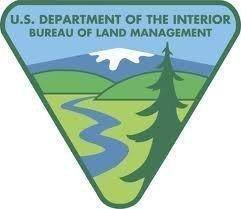The Bureau of Land Management (BLM) Utah is advising public land visitors of rapidly changing conditions on several popular rivers throughout Utah, including the Colorado, Dolores, Green, San Rafael, and White rivers.
In many cases, above average amounts of precipitation and unpredictable snowmelts are creating some of the highest river flows and most unpredictable flash floods in decades. The waters in these rivers and their associated side canyons can rise dramatically in a very short amount of time.
Most BLM-managed public lands and rivers are in remote backcountry settings and self-rescue will be necessary in the event of any issues arising. The BLM recommends that public land visitors reconsider any plans to undertake these outdoor activities if your group does not maintain the expertise to respond to these types of conditions.
River runners should be aware that they are likely to encounter new and unseen obstacles, large amounts of debris, stronger undertows, faster currents, colder water temperatures, and higher-class rapids throughout the spring and early summer.В Public land visitors should also be aware that in many instances, the high river levels have either reduced the size or temporarily eliminated several popular riverside campsites.В River runners are advised to prudently select campsites to prevent the need to continue downriver in the dark when unforeseen obstacles can pose greater risks.
The unknown timing of snowmelts in the surrounding mountains is also creating an unpredictable potential for flash flooding along river tributaries and side canyons and visitors should avoid using these locations as overnight campsites.В Known new river conditions include:
- Significant changes to the Dolores River’s Stateline Rapid at River Mile 148.5;
- A Class 4 rapid in Desolation Canyon’s Joe Hutch Rapid at Green River Mile 40.5. The BLM recommends that boaters scout this rapid before running it;
- The Green River Daily, between Nefertiti and Swasey’s Rapid, is expected to crest above the road and campgrounds so this part of the river will likely be closed; and
- Record flows through Labyrinth Canyon of the Green River. Running this section of the river in smaller vessels, such as canoes, duckies, and kayaks, is notВ В В advisable.
Backcountry hikers should be aware of the potential for flash flooding in several popular canyoneering locations, including:
- Little Wild Horse, Bell, Ding and Dang, and Chute and Crack Canyons in the San Rafael Swell; and
- Spring Creek Canyon and the Kanarra Creek Falls near Cedar City in Iron County.
For more information regarding current river conditions, visitors are advised to regularly check the following websites prior to launching:
- BLM Utah Recreation Website: https://www.blm.gov/ut/st/en/prog/recreation_home.html
- U.S. Geological Survey’s Real-Time Water Data for Utah: https://waterdata.usgs.gov/ut/nwis/rt
- National Weather Service’s Snowmelt Peak Forecasts for the Colorado Basin River: https://www.cbrfc.noaa.gov/product/peak/peak.cgi
- Colorado River: https://www.blm.gov/ut/st/en/fo/moab/recreation/river_recreation/highwateralert.html
- Labyrinth Canyon of the Green River: https://www.blm.gov/ut/st/en/fo/moab/recreation/river_recreation/highwateralert.html
- San Rafael Swell Flash Flooding Advisory: https://www.blm.gov/ut/st/en/fo/price/recreation/river_inf.html
- San Rafael River’s Black Box Canyons Information: https://www.blm.gov/ut/st/en/fo/price/recreation/river_inf/know_blackboxes.html
The BLM manages more land – over 245 million acres – than any other Federal agency. This land, known as the National System of Public Lands, is primarily located in 12 Western states, including Alaska. The Bureau, with a budget of about $1 billion, also administers 700 million acres of sub-surface mineral estate throughout the nation. The BLM’s multiple-use mission is to sustain the health and productivity of the public lands for the use and enjoyment of present and future generations. The Bureau accomplishes this by managing such activities as outdoor recreation, livestock grazing, mineral development, and energy production, and by conserving natural, historical, cultural, and other resources on public lands.

